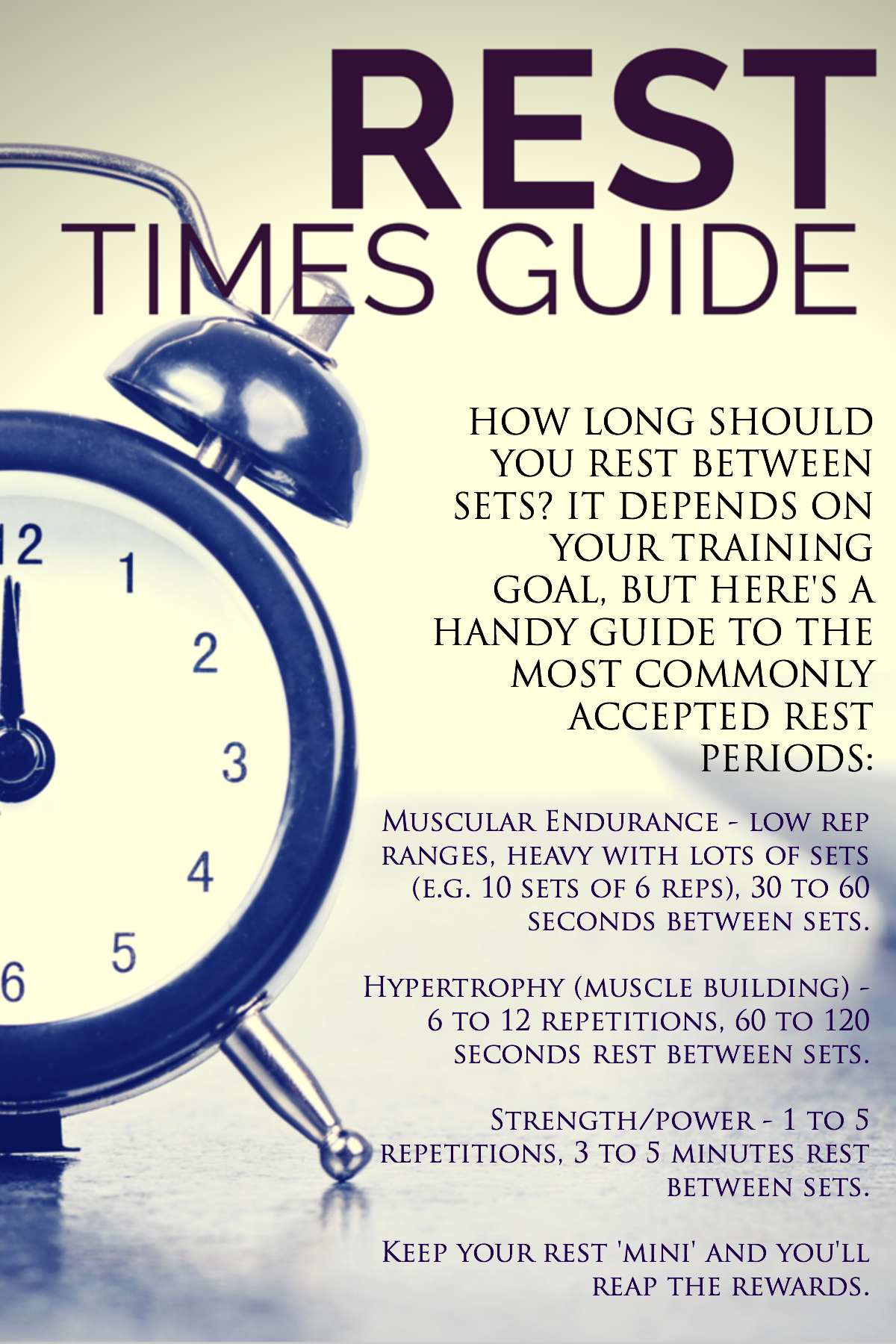How To Sell Rest Times To A Skeptic
by Matt Hodges
18 February 2015
It’s hard to believe that you can exercise too much – but ‘over-training’ is an extremely common problem among professional athletes and recreational gym goers alike. Continuous exercise can actually diminish your performance, slow down your progress and even damage your muscles. Why? Because your body needs rest times so that it can recover between training sessions.
The science behind rest times
When you exercise, you are stretching, pulling and tearing your muscle fibres. A signal is sent to the brain to let it know that the muscles are under attack, and your body’s natural proteins will rush to rebuild them, leaving them even stronger than they were before. However, your muscles can’t be repaired until the ‘attack’ stops, and that is why rest times are so important after exercise.
Incidentally, if you want to speed up this recovery process, you can end your workout session with a protein and carbohydrate-rich snack, which will go straight to work on the areas that need it the most.
How to rest
There are a few ways to rest between workouts. First, there are the mini rests that you take between reps and HIIT sessions. These are important breaks that allow you to catch your breath and psych yourself up for the next round, but they are also allowing your muscles to contract slightly so that you are reducing the risk of cramping. However, they are called ‘mini’ rests for a reason! Perhaps you’ve seen people in the gym that stop and chat for five minutes before continuing their workout? Chances are, these gym goers will make little to no progress (unless they are purely training for strength or are power lifters) and will look exactly the same this time next year! Why? Because their breaks aren’t very ‘mini’! For exercise to be effective, it needs to provide overload – in other words, push you slightly beyond your comfort zone. By taking long breaks between sets, you are almost fully recovered from one set to the next, which reduces the overall intensity of the workout. Too little intensity equates to no stimulus for improved fitness. It therefore really pays to keep an eye on the clock when taking a mini rest.
Then there is the cool down period. A good personal trainer should be militant about warming up and cooling down, and with good reason! After a tough workout, you need to gradually reduce the pressure on your muscles and lower your heart rate by spending approximately five minutes doing a gentle exercise such as jogging or cycling. The cool down period helps to improve flexibility and ease you into the muscle repair stage.
Finally, you should be sure to schedule rest days into your weekly workout schedule. The Method suggests that you work out with us just four days a week, with a possibility of two very short high intensity cardio sessions (max 20 minutes each) on two of your rest days. The reason that we don’t push clients into a 5 or a 6-day lifting protocol is the initial effect it has on the central nervous system and endocrine (hormonal) systems; they are involved in each and every workout. It’s essential to always give your body time to go through the process of growth and repair.
Weekly sports massages are the (highly recommended) extra step in your resting regime. Unlike an aromatherapy massage, sports massages work hard on your tension areas and focus on the muscle groups which are being worked the hardest, keeping them limber and in good health. Any knots or trapped nerves can also be worked out, preventing a more serious injury further down the line and making you aware of any possible adjustments that you need to make to your workout regime.
While you should strive to work harder week-to-week and month-to-month to improve your fitness, there usually comes a point when you stop making progress. This is called a plateau and is often caused by sticking with the same exercise routine past its “sell by date”. It is therefore important that every peak of effort is followed by a period of stability and recovery. This is called Periodization.
Periodization means building up intensity and duration of exercise to reach a high point and then backing off again – an example of a two steps forward, one back approach. Integrating periodised rest in this way should ensure that you continue to make progress for years to come.
This article was written by Matt Hodges, you can see all his articles here.







